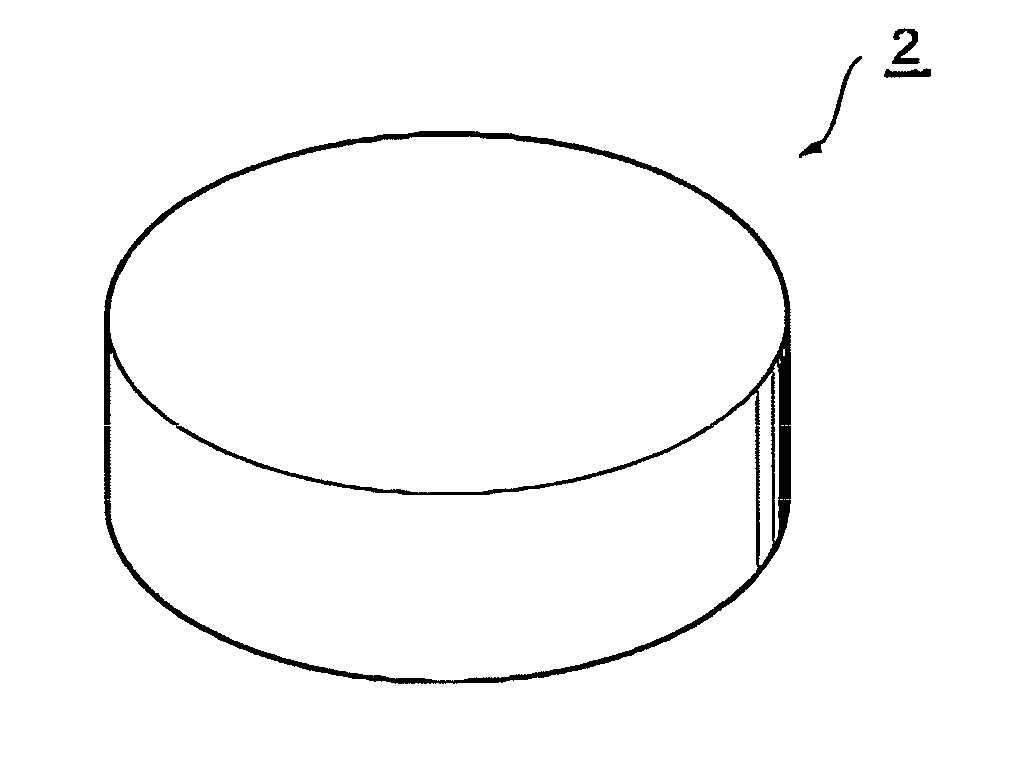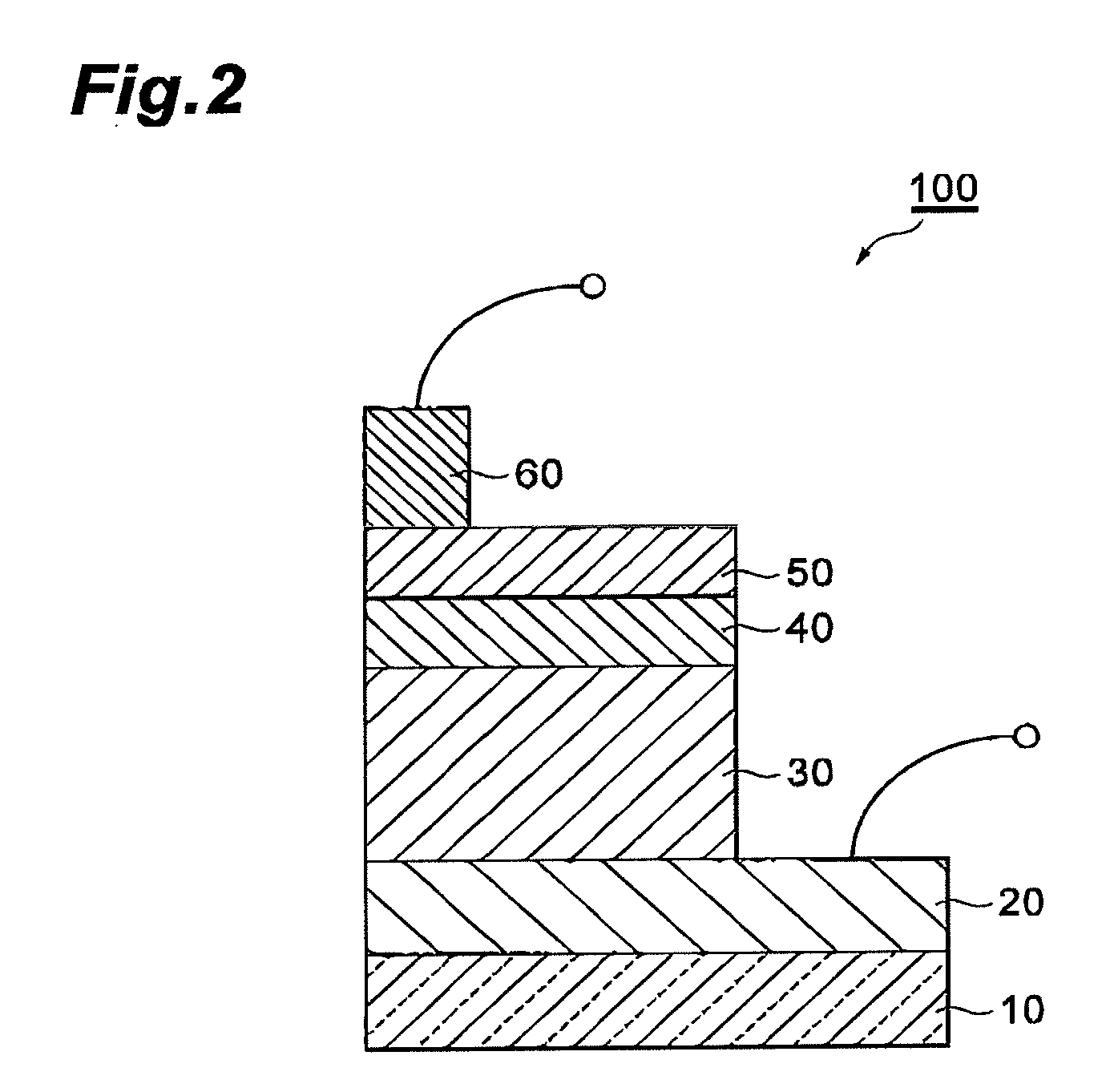Sintered oxide material, method for manufacturing same, sputtering target, oxide transparent electrically conductive film, method for manufacturing same, and solar cell
a technology of oxide material and oxide, which is applied in the direction of conductive materials, final product manufacture, textiles and papermaking, etc., can solve the problems of insufficient reliability, low reliability, and nothing is mentioned regarding optical transparency in the infrared region or reliability, and achieve excellent optical transparency, excellent durability, and minimize anomalous discharge during sputtering
- Summary
- Abstract
- Description
- Claims
- Application Information
AI Technical Summary
Benefits of technology
Problems solved by technology
Method used
Image
Examples
example 1
(Fabrication of Oxide Sintered Compact)
[0166]The starting powders used were indium oxide powder with a purity of 99.99 mass % and a mean particle size of 0.5 μm, tin oxide powder with a purity of 99.99 mass % and a mean particle size of 0.5 μm, and strontium carbonate powder with a purity of 99.9 mass % and a mean particle size of 1 μm. The tin oxide powder and the strontium carbonate powder were mixed with a dry ball mill so that the tin, element and the strontium element mixing ratios (based on atomic percent) were the same [Sn / (Sn+Sr)=0.5], to prepare a mixed powder. The mixed powder was calcined in air at 1000° C. for 2 hours and then treated with a dry ball mill to obtain a calcined powder with a mean particle size of 0.2 μm.
[0167]The indium oxide powder and the tin oxide powder were combined with this calcined powder as listed in the “Final powder composition” column in Table 1 and mixed with a dry ball mill. The mean particle size of the mixed powder was 0.2 μm. The obtained ...
examples 2 to 13
[0187]Oxide sintered compacts and oxide transparent conductive films for Examples 2 to 13 were fabricated in the same manner as Example 1, except that the amounts of the indium oxide powder and the tin oxide powder added to the calcined powder obtained in the same manner as Example 1 were varied as shown in the “Final powder composition” column in Table 1.
[0188]The oxide sintered compacts of Examples 2 to 13 were pulverized, and the produced phases were identified in the same manner as Example 1 by an X-ray diffraction test. As a result, in Examples 2 to 4, 6, 7, 9, 10, 12 and 13, only diffraction peaks for a bixbite-type oxide phase and perovskite-type oxide phase were detected, while no diffraction peak for a tin oxide phase or strontium oxide phase was detected. On the other hand, in Examples 5, 8 and 11, only a diffraction peak for a bixbite-type oxide phase was detected, while no diffraction peak for a tin oxide phase or strontium oxide phase was detected.
[0189]Analysis was als...
examples 14 to 18
[0192]Calcined powders were obtained in the same manner as Example 1. An oxide sintered compact and oxide transparent conductive film for Example 14 were fabricated in the same manner as Example 1, except that the amounts of the indium oxide powder and the tin oxide powder added to the calcined powder were varied as shown in the “Final powder composition” column in Table 1, and the firing temperature was changed from 1500° C. to 1400° C.
[0193]An oxide sintered compact and oxide transparent conductive film for Example 15 were fabricated in the same manner as Example 1, except that the amounts of the indium oxide powder and the tin oxide powder added to the calcined powder were varied as shown in the “Final powder composition” column in Table 1, and the firing temperature was changed from 1500° C. to 1350° C.
[0194]An oxide sintered compact and an oxide transparent conductive film for Example 16 were fabricated in the same manner as Example 1, except that the amounts of the indium oxid...
PUM
| Property | Measurement | Unit |
|---|---|---|
| particle size | aaaaa | aaaaa |
| particle size | aaaaa | aaaaa |
| resistivity | aaaaa | aaaaa |
Abstract
Description
Claims
Application Information
 Login to View More
Login to View More - R&D
- Intellectual Property
- Life Sciences
- Materials
- Tech Scout
- Unparalleled Data Quality
- Higher Quality Content
- 60% Fewer Hallucinations
Browse by: Latest US Patents, China's latest patents, Technical Efficacy Thesaurus, Application Domain, Technology Topic, Popular Technical Reports.
© 2025 PatSnap. All rights reserved.Legal|Privacy policy|Modern Slavery Act Transparency Statement|Sitemap|About US| Contact US: help@patsnap.com



